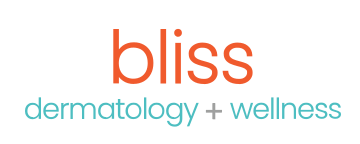Acne
Acne, otherwise known as acne vulgaris, is the most common skin disorder in the United States, affecting a significant portion of the population. It’s especially common among adolescents and young adults, with approximately 85% of people between the ages of 12 and 24 suffering from acne. While many outgrow the condition, acne can persist into adulthood—26% of women and 12% of men continue to experience acne well past their teenage years. Beyond its most obvious symptoms, acne can also have a profound effect on self-esteem and in severe cases lead to lasting scarring, furthering its emotional and physical impact.
What is acne?
Acne vulgaris can manifest in both inflammatory and non-inflammatory forms. Inflammatory acne is the pustules, deeper papules, and cystic lesions that, as the name suggests, come with inflammation. Non-inflammatory acne includes the familiar whiteheads and blackheads. Acne most commonly appears on the face but can also appear on the chest and back. It typically starts in adolescence and can resolve by the mid-twenties.
What causes acne?
There are many different causes of acne, including clogged pores, hormonal imbalances, excess oil production, stress, genetics, and more. Most people with acne encounter the most severe symptoms during puberty. During this time, the skin experiences an increase in oil (sebum) production as hormones fluctuate. This, combined with the regular shedding of dead skin cells, causes pores to clog. Normal bacteria on the skin gets trapped in these pores, triggering an inflammatory response. Clogged pores with minimal levels of bacteria result in whiteheads and blackheads, whereas clogged pores with larger bacterial counts create inflammatory lesions like pustules, papules (small bumps), cysts, and nodules (hard, solid lesions).
Primary factors of acne:
- Increased hormones leading to sebum production
- Sticky dead skin cells lead to clogged pores
- Increased bacterial flora
- Increased inflammation
Acne primarily occurs from a combination of factors that disrupt the normal function of the skin. Hormonal changes and excess oil create an environment where bacteria can thrive and cause inflammation, resulting in acne. Understanding these primary factors helps in managing and treating this common skin condition effectively.
Other factors that contribute to acne:
- High-glycemic index diet
- Insulin resistance
- Hormone imbalance, such as in polycystic ovarian syndrome (PCOS)
- Medications such as steroids and anticonvulsants
- Occlusive cosmetics or moisturizers
- High environmental humidity
Acne can be influenced by a range of factors beyond the typical hormonal and bacterial causes. A high-glycemic index diet, which includes foods that rapidly increase blood sugar levels, may exacerbate acne by increasing oil production. Hormonal imbalances, such as those seen in polycystic ovarian syndrome (PCOS), can also play a significant role in acne. Additionally, certain medications such as steroids or anticonvulsants may worsen acne as a side effect. As a result, the presence of acne can be an indicator of other processes occurring in the body.
What are the treatment options?
Today, a variety of treatment options are available for acne, but finding the right approach often requires a personalized strategy due to the unique causes behind each individual’s condition. Acne treatments typically don’t yield overnight results, and noticeable improvement usually takes about four to eight weeks.
The primary goals of acne treatment are to unclog pores, reduce acne-causing bacteria, and lower both sebum production and inflammation. Preventing scarring is also crucial. For this reason, combination therapy is often recommended. Topical retinoids, for example, help to clear clogged pores by promoting the exfoliation of dead skin cells. Chemical peels with glycolic or salicylic acid can further aid in exfoliation and oil reduction. Topical and oral antibiotics are used to decrease bacterial presence and inflammation, while phototherapy offers additional benefits in reducing both bacteria and inflammation.
For women with hormonally driven acne or conditions like PCOS, oral contraceptives or other hormonal therapies might be beneficial. In severe cases, such as nodular or cystic acne, isotretinoin (formerly known as Accutane) can significantly reduce oil production and alleviate symptoms.
Addressing acne early is key to minimizing the risk of scarring. However, if scarring does occur, there are effective treatments available, including microneedling, chemical peels, and laser therapy, to help improve the appearance of the skin. By adopting a comprehensive and tailored treatment plan, individuals can effectively manage acne and work towards clearer, healthier skin.
Schedule an Acne Treatment Consultation
If you’re suffering from acne, schedule a dermatology appointment today with Bliss Dermatology. As a leading provider of board-certified dermatology care, Bliss Dermatology is recognized as one of the top practices on Florida’s Gulf Coast. With convenient offices in Venice and Englewood, our expert team is ready to help you achieve clearer, healthier skin. Book your consultation now and take the first step towards effective acne treatment.
